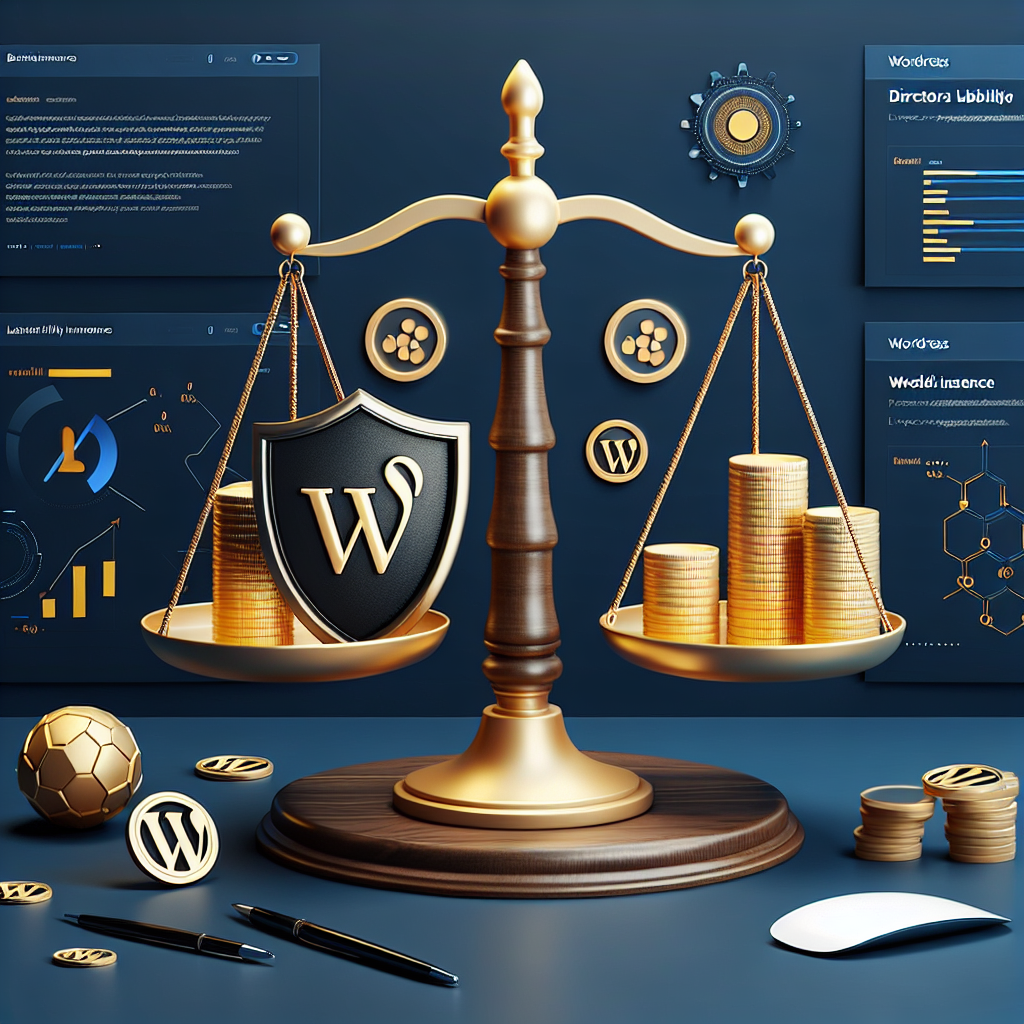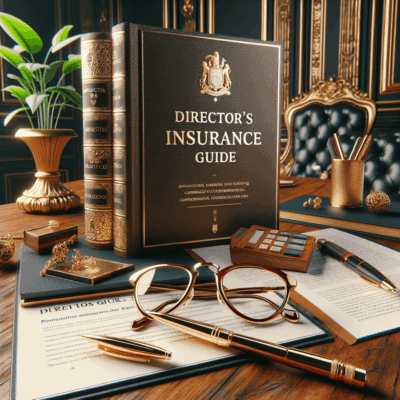Understanding Directors Liability Insurance Pricing: A Comprehensive Guide
In the complex and often litigious landscape of modern business, the role of a company director carries significant weight and, consequently, substantial personal risk. Decisions made in the boardroom can have far-reaching consequences, exposing directors to potential lawsuits from shareholders, employees, regulators, creditors, and competitors. To mitigate this ever-present threat, Directors and Officers (D&O) Liability Insurance has become an indispensable tool for corporate governance. However, for many organizations, understanding the factors that influence directors liability insurance pricing can feel like deciphering a complex code. This detailed guide aims to demystify that process, providing a clear, informative breakdown of what drives the cost of this critical coverage and why securing a policy is not just a precaution but a recommended cornerstone of sound business practice.
What is Directors and Officers (D&O) Liability Insurance?
Before delving into pricing, it’s crucial to understand what D&O insurance is and what it protects. In essence, it is a specialized liability coverage designed to protect the personal assets of a company’s directors, officers, and sometimes managers, from claims alleging wrongful acts in their capacity of managing the company.
A standard D&O policy typically consists of three parts, often called “sides”:
- Side A: Provides direct coverage to directors and officers when the company cannot indemnify them. This is the core protection for personal assets.
- Side B: Reimburses the corporation when it does indemnify its directors and officers for a loss, effectively protecting the company’s balance sheet.
- Side C: Provides coverage for the corporate entity itself, typically in the context of securities claims (more common for publicly traded companies).
This insurance defends against a wide array of claims, including breaches of fiduciary duty, negligence, misrepresentation, errors in judgment, and violations of law. The costs covered include legal defense fees, settlements, and judgments. When speakling with a trusted insurance advisor you will get a a quote based on your requirements and nothing more, don’t pay for cover you won’t actually require.
The Core Factors Driving Directors Liability Insurance Pricing
D&O insurance is not a one-size-fits-all product. Insurers conduct a rigorous risk assessment for each applicant, and the premium is a direct reflection of their calculated risk. The following factors are the primary levers that adjust the final price.
1. Company Size and Financial Health
This is one of the most significant determinants of price.
- Revenue: Higher revenue generally correlates with higher premiums. A larger company typically has more operations, more complex financial structures, and a greater number of stakeholders, all of which increase exposure to potential claims.
- Market Capitalization (for public companies): This is a key metric for insurers. A higher market cap often means a larger shareholder base and greater scrutiny, leading to a higher risk profile.
- Profitability and Financial Stability: A company with strong, consistent profits and a healthy balance sheet is viewed more favorably than one with volatile earnings or high debt levels. Financial distress is a major red flag for insurers, as it can lead to creditor lawsuits and allegations of mismanagement.
2. Industry Sector and Risk Profile
The industry in which a company operates profoundly impacts its D&O risk. Insurers categorize industries based on historical claims data and perceived litigiousness.
- High-Risk Industries: Biotechnology, pharmaceuticals, financial services (especially fintech and crypto), technology, and healthcare a
- High-Risk Industries: Technology, biotech, and financial services are often considered high-risk. They face intense regulatory scrutiny, rapid change, and are frequent targets for shareholder class-action suits.
- Medium-Risk Industries: Manufacturing, retail, and professional services typically fall into a moderate risk category.
- Lower-Risk Industries: Non-profit organizations and privately held companies in less volatile sectors may enjoy lower premiums, though their risk is certainly not zero.
3. Claim History
A company’s past is a powerful predictor of its future. Insurers will meticulously examine the company’s history of D&O claims, as well as any other relevant litigation.
- Frequency and Severity: A history of frequent or severe claims will almost certainly lead to significantly higher premiums or even difficulty in obtaining coverage.
- Prior Acts: Insurers will want to know about any past incidents that could give rise to a “claim” in the future. Failure to disclose such matters can result in a denied claim.
4. Corporate Governance Practices
The strength and maturity of a company’s governance structures are critically important to underwriters. They are looking for evidence that the company proactively manages risk.
- Board Composition and Expertise: A diverse board with independent directors and relevant industry experience is viewed positively.
- Formalized Processes: The existence of audit committees, risk committees, whistleblower policies, codes of conduct, and regular board meetings demonstrates a commitment to sound governance.
- Documentation: Meticulous record-keeping of board meetings and decisions shows a disciplined approach that can help defend against allegations.
5. Type of Company: Public, Private, or Non-Profit
The legal and regulatory environment differs drastically depending on the company’s status.
- Public Companies: Face the highest exposure due to securities laws. Shareholder class-action lawsuits following a drop in stock price are a common and costly threat. Consequently, public company D&O is the most expensive.
- Private Companies: While generally less expensive, private company D&O is increasingly vital. Risks include claims from vendors, creditors, competitors, and employees. Mergers and acquisitions activity also heightens risk.
- Non-Profit Organizations: Are not immune to lawsuits. Claims can come from donors, beneficiaries, volunteers, or regulators. While premiums may be lower than for for-profit entities, the coverage is no less important.
6. Coverage Terms and Policy Structure
The specifics of the policy itself are a major component of the price.
- Limits of Liability: This is the maximum amount the insurer will pay for a claim. Higher limits mean higher premiums. Choosing an appropriate limit is a strategic decision based on the company’s risk appetite and potential exposure.
- Deductibles (Retentions): This is the amount the insured must pay out-of-pocket before the insurance coverage kicks in. Opting for a higher deductible can lower the annual premium.
- Scope of Coverage: Broader policy wording that includes fewer exclusions will be more expensive. Key terms to negotiate include the definition of “claim,” the application of exclusions (like the insured vs. insured exclusion), and the inclusion of entity coverage for Side C.
7. Market Conditions (The D&O Cycle)
The insurance industry operates in cycles of “hard” and “soft” markets, which are driven by broader economic factors, investment returns for insurers, and industry-wide loss tren
The Underwriting Process: How Insurers Assess Risk
When you apply for D&O insurance, you will be required to complete a detailed application. This document is the primary source of information for the underwriter. It will ask for:
- Financial statements (audited are preferred).
- Details on all directors and officers, including their biographies.
- Information on subsidiaries and mergers & acquisitions activity.
- A history of past litigation and insurance claims.
- Copies of corporate governance documents.
The underwriter analyzes this information to build a risk profile. They may follow up with specific questions for management or the board. This process is intensive because the insurer is essentially betting on the competence and integrity of the company’s leadership.
Why D&O Insurance is Highly Recommended
Beyond the obvious financial protection, securing a robust D&O policy is a strategic business decision that is universally recommended by legal and financial advisors for several compelling reasons:
- Attracting and Retaining Top Talent: Qualified individuals are often reluctant to join a board without the assurance that their personal assets are protected. D&O insurance is a non-negotiable requirement for most experienced directors.
- Protecting Personal Assets: Without insurance, a director could be forced to use their personal savings, home, and other assets to pay for legal defense and settlements. D&O insurance acts as a vital shield.
- Ensuring Corporate Indemnification: While companies often have bylaws requiring them to indemnify their directors, these promises are only as good as the company’s financial health. If the company is insolvent, the indemnification is worthless. Side A coverage fills this gap.
- Managing Litigation Costs: Even a frivolous lawsuit requires a robust and expensive legal defense. D&O insurance provides the resources to mount a proper defense, protecting both the individuals and the company’s finances from being drained by legal fees.
- Enhancing Investor and Stakeholder Confidence: The presence of a solid D&O policy signals to investors, lenders, and partners that the company is well-managed and has prudent risk mitigation strategies in place.
Strategies for Managing and Optimizing Your D&O Insurance Costs
While D&O insurance is a necessary expense, there are ways to manage its cost effectively.
- Start Early and Plan Ahead: Begin the renewal process well in advance (90-120 days). This gives you ample time to gather materials, negotiate with insurers, and avoid being forced into a last-minute, expensive decision.
- Work with a Specialized Broker: Do not use a generalist insurance agent. Partner with a broker who specializes in executive risk and has deep relationships with A-rated carriers that underwrite D&O policies. Their expertise is invaluable in marketing your company effectively to insurers and negotiating the best terms.
- Invest in Robust Corporate Governance: This is the most impactful long-term strategy for controlling costs. A well-
- Maintain Strong Governance: A well-documented, transparent, and ethical governance framework is the best evidence you can provide to an underwriter to demonstrate a lower risk profile.
- Consider a Higher Deductible: If your company has the financial strength to absorb a larger retention, this can be an effective way to reduce your premium.
- Benchmark and Compare: Your broker should provide benchmarking data against similar companies in your industry. This context is crucial for understanding whether a quoted price is competitive.
- Be Transparent and Forthright: Never misrepresent or omit information on the application. This is a surefire way to have a claim denied later. Full transparency builds trust with the underwriter and can lead to a more favorable assessment.
Conclusion: An Investment in Leadership and Stability
Directors liability insurance pricing is a multifaceted equation, reflecting the unique blend of a company’s financial standing, industry dynamics, governance quality, and operational history. It is not a simple commodity to be purchased based on price alone. The goal is to secure comprehensive coverage from a financially stable carrier at a fair and sustainable price.
Viewing D&O insurance merely as a cost is a mistake. Instead, it should be seen as a critical investment in the company’s leadership, stability, and future. It empowers directors to make bold, strategic decisions without the paralyzing fear of personal ruin and provides the organization with a resilient foundation to navigate the inevitable challenges of the business world. In today’s environment, where directors’ exposures are continually expanding, securing and properly structuring this coverage is not just recommended; it is an essential component of responsible corporate stewardship.
Frequently Asked Questions
Q: What factors determine the cost of Directors & Officers (D&O) liability insurance?
A: The pricing is influenced by several factors, including your company’s size, industry, financial health, claims history, the amount of coverage you choose, and your company’s specific operations and risk exposures.
Q: Why is D&O insurance so expensive for some companies?
A: Premiums can be high for companies in high-risk industries (like finance or biotech), those with a history of lawsuits or regulatory actions, startups with volatile financials, or firms preparing for an IPO or merger, as these scenarios present a greater risk of claims to the insurer.
Q: Can we reduce our D&O insurance costs?
A: Yes, you can potentially lower costs by implementing strong corporate governance practices, thorough risk management protocols, and demonstrating a history of sound financial and operational decisions. Shopping around and comparing quotes from different insurers is also crucial.
Q: Is D&O insurance pricing a one-time assessment, or does it change?
A: Pricing is not fixed. It is typically reassessed at each annual policy renewal. Your premiums can increase or decrease based on changes in your company’s performance, claims made during the policy period, and overall trends in the D&O insurance market.





